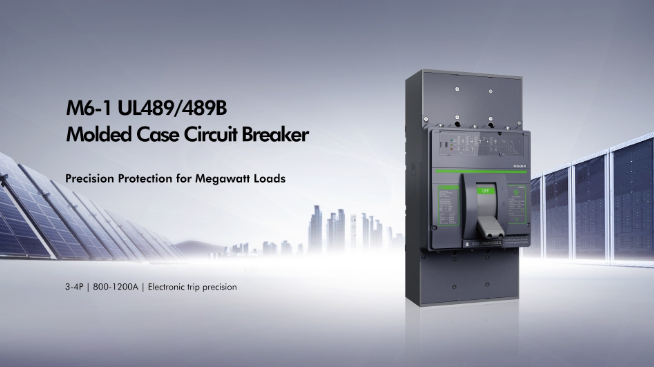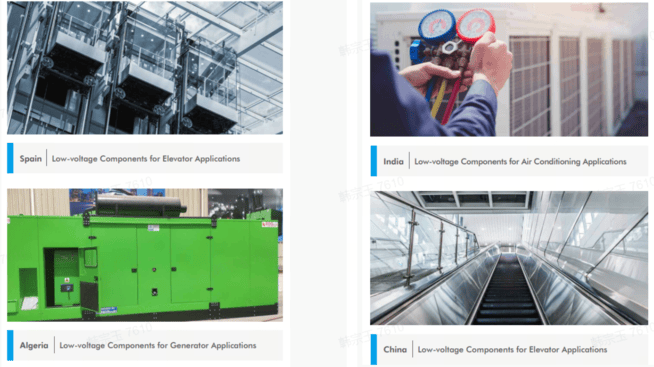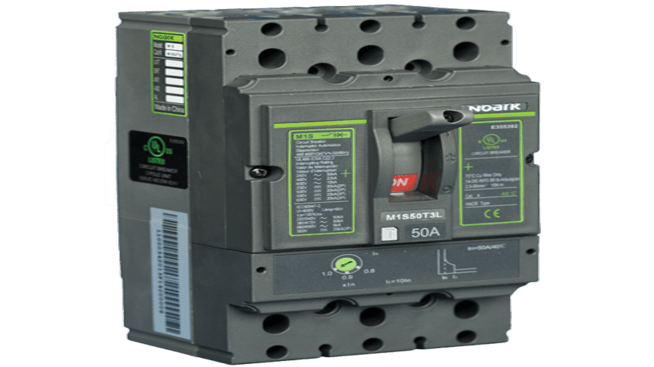Introduction
Industrial electric motors are highly vulnerable to overcurrents or short circuits. For this reason, a motor must come with a protective device that safeguards it against phase failures or electrical faults and ensures personnel and equipment safety. One such device for the overload phase is a manual motor starter.
A manual motor starter lets operators safely start or stop an electric motor through manual operation. It is also a two-in-one electromechanical unit that offers protection against current overload and short circuits. And with its robust engineering, this device can work reliably in industries with harsh environments filled with moisture and dust.
In this article, we provide you with a comprehensive guide to the functions and proper usage of an electric motor starter.
Why Integrated Motor Protection Matters?
Most modern industrial processes rely on electric motors for production and operation. HVAC systems, refrigeration units, production machinery, and other industrial equipment function because of a motor system.
But as with any other electric unit, an overload or short circuit can damage the motor and its components. Without any protective measures in place, an electric fault can gradually deteriorate the motor’s performance, which leads to operational downtime and safety hazards.
For many years, facilities have used separate circuit breakers for short circuits and thermal relays for overcurrent. While both devices are effective in their respective protective functionalities, having these devices as separate units is quite cost-inefficient and comes with installation difficulties.
For this reason, many firms are opting for manual motor starters as they combine overload and short circuit protection in a single unit. This device supports simple installation, streamlines the facility’s electrical system, saves acquisition cost, and offers a compact design that saves valuable space.
And compared to separate protective devices, a manual motor starter can respond quicker during fault conditions because it can detect an issue faster and disconnect flow in as fast as milliseconds.
CHINT Ex9S is an example of a manual motor starter (MMS) that offers dual overload and short circuit protection for industrial electric motors. This MMS is a compact unit with motor branch circuit isolation, control, and reliable overcurrent protection. And with its magnetic short-circuit protection and Trip Class 10 thermal overload protection, it is highly ideal for any modern motor control needs.
Ex9S is a NOARK product, an electric brand from the CHINT Group that serves Fortune 500 companies worldwide. To this date, NOARK has set safety benchmarks in demanding industries such as data centers, renewable energy, and rail transit.
Functions of a Manual Motor Starter
Simply put, a manual motor starter serves as a control unit for the safe activation, disengagement, and operation of electric motors. Here are some of its key functions.
Isolation and Switch Function
An MMS provides a reliable disconnection control for technicians that they may use to isolate the motor from the electrical supply during maintenance or emergencies. This isolation keeps personnel safe from accidental startups that can cause electrocution.
Note that most MMS support local motor function, which means an operator may manually start or stop the electric motor at its current location. This feature is preferable in simpler facilities where centralized control can be impractical.
Combined Overload and Short-Circuit Protection
For overload protection, an MMS applies thermal or magnetic means to detect excessive current flow and cut off the electric flow. Meanwhile, a magnetic trip (just like in circuit breakers) in the MMS is in place to interrupt current flow during earth leakage or short circuit.
For instance, CHINT’s Ex9S manual motor starter combines both thermal and magnetic trip mechanisms for fault protection. The thermal trip unit guards against prolonged overloading, while the magnetic trip responds promptly to short-circuit events. If only short-circuit protection is necessary, the Ex9S series also offers magnetic-only models. These options allow users to select the right form of protection for specific applications.
Manual and Automatic Control Options
With an MMS, operators can control the motor directly. It can also work alongside contactors to enable automated control. In short, an MMS is versatile enough to work under various systems, whether it is a simple or a complex automated industrial setup.
Manual Motor Starter vs Other Protection Devices
In this section, we compare MMS with other traditional protection devices for electric motors.
To sum up the table above, a manual motor starter switch is the most cost-effective and compact solution for electric motor protection. This is due to its dual protective nature of combining both overload and short circuit protection in a single unit. It is also highly reliable when it comes to safe initiation and halting of the motor because of its isolation switching feature (which disconnects the motor system quickly from the electric circuit for manual control or adjustment).
Enhancing Safety with Motor Starter Auxiliary Contacts and Accessories
You can integrate various accessory devices into an MMS to elevate its safety capabilities, such as:
Auxiliary Contacts (e.g. AX51, AX52):
These contacts send signals when the motor starter switches ON or OFF to give facility personnel a heads up about the starter’s status.
Fault Signaling Contact (e.g., AL51):
Gives a specialized signal if an electric fault occurs, such as an overload or short-circuit. This helps the operators to quickly identify the problem and respond accordingly.
Undervoltage Release (e.g., UVT51):
A device that disconnects the motor automatically if the supply voltage drops below a safe threshold.
Shunt Release (e.g., SHT51):
Allows remote tripping of the motor starter from external control devices such as emergency stop buttons.
Standards and Compliance for Manual Motor Starters
To ensure reliable performance and protection, manual motor starters must meet strict international and regional safety standards. For instance, EC 60947-4-1, which was formulated by the International Electrotechnical Commission (IEC), sets the requirements for low-voltage motor controllers, starters, and protectors. Following the stipulated guidelines here can help maximize your starter’s protective capability against overload and short circuits.
Another well-known safety standard is the UL 60947-4-1 from the Underwriters Laboratories. This specifies requirements for the safety, performance, and testing of motor controllers and starters. A product certified with this standard is suitable for the North American market and is approved for installation in the U.S.
CHINT’s Ex9S Manual Motor Starter meets stringent international standards for electric motor protection, which guarantees the starter’s protective quality and performance. As of this writing, the Ex9S complies to the following:
● IEC/EN 60947-1, -2, -4-1, -5-1
● UL 60947-1; -4-1
● GB 14048.1, 2, 4
● CSA 22.2 NO. 60947-1,-4-1
Operational Benefits for Facilities
As an MMS protects your electric motors from faults, this means longer lifespan and reduced frequency for maintenance and repair. This significantly reduces your repair and replacement expenses and prevents operational downtime.
For managers, the reliability and effectiveness of an MMS promote a stress-free operation, even in high-voltage and high-volume production lines. When an overload happens, the starter can instantly stop the current flow to prevent further damage. It also enables safe manual control by the operators for safe re-initiation of the electric motor. This reduces production bottlenecks, as motors can be safely and quickly reset without waiting for lengthy troubleshooting or the replacement of blown fuses.
Acquire a Comprehensive and Compact Electric Motor Protection With a High-Class Manual Motor Starter
Integrating protection with your industrial electric motors is essential for a safe, efficient, and guideline-compliant industrial or commercial operation. One type of protective device you can count on is a manual motor starter, which combines overload and short-circuit protection in a single unit.
For a compact, certified, and reliable MMS solution, consider CHINT. We are a global leading smart energy provider of manual motor starters that can safeguard not only your industrial motors, but also the consistency, quality, and continuity of your production and operations. All of our products are safe, compliant, and ready for all types of common electric faults to ensure the safety of your personnel and equipment.
Empower a safe and productive facility with us today. Visit our official website and check out our wide range of energy solutions options.
If you have any questions or need further assistance, don't hesitate to reach out to us.






/ac-motor-starter-ul/ex9s-manual-motor-starter-(mms)/product-image/Ex9S Manual Motor Starter (MMS).jpg.thumb.319.319.png)
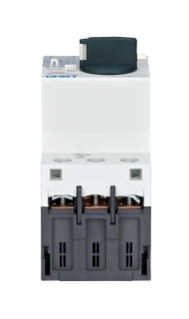
.jpeg)
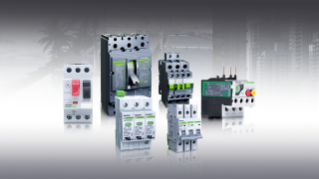
.jpeg)
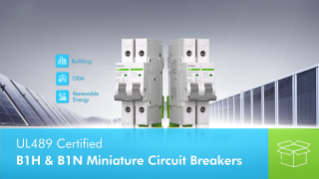
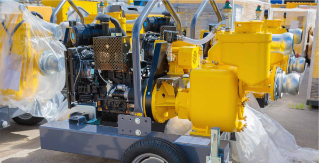
.png)
